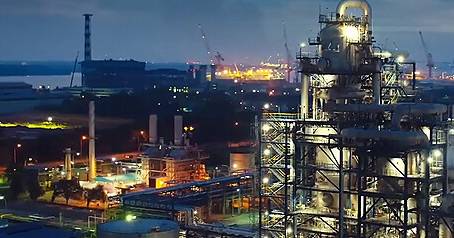Noy . 25, 2024 09:45 Back to list
hdpe pipe connector
Exploring HDPE Pipe Connectors A Comprehensive Overview
High-Density Polyethylene (HDPE) pipe connectors are essential components in modern piping systems, known for their durability, flexibility, and resistance to various environmental factors. In recent years, the usage of HDPE pipes has surged due to their advantages over traditional materials such as metal and concrete. This article delves into the significance of HDPE pipe connectors, their types, installation methods, and benefits, making it an indispensable resource for engineers, contractors, and project managers.
Understanding HDPE Pipes and Connectors
HDPE is a thermoplastic made from petroleum, characterized by its high strength-to-density ratio. HDPE pipes are commonly used in various applications, including water supply, gas distribution, sewage, and industrial processes. The versatility of HDPE pipes lies in their ability to withstand extreme temperatures, corrosive chemicals, and high-pressure environments. However, these pipes require reliable connectors to ensure a secure and leak-free system.
HDPE pipe connectors serve as junctions between two or more sections of pipe, allowing for seamless transitions and changes in direction. These connectors come in various shapes, sizes, and configurations, tailored to different applications and requirements.
Types of HDPE Pipe Connectors
1. Couplings These are the most common type of connector, used to join two segments of HDPE pipe. They can be either standard couplings or repair couplings, which are designed to fix damaged pipe sections.
2. Elbows Elbow connectors are used to change the direction of the pipe, commonly available in angles of 45 and 90 degrees. They facilitate efficient flow by minimizing pressure loss.
3. Tees Tee connectors enable the branching of pipelines, allowing for the connection of additional pipes at right angles. There are equal tees (same diameter) and reducing tees (different diameters) to suit various configurations.
4. Reducers When connecting pipes of different diameters, reducers are utilized to ensure a smooth transition and maintain flow efficiency.
5. Flanges Flange connectors provide a means of connecting HDPE pipes to other equipment or piping systems, allowing for easy assembly and disassembly.
6. End Caps These connectors close off the ends of pipes, preventing flow when necessary and ensuring system integrity.
hdpe pipe connector

Installation Process
The installation of HDPE pipe connectors involves several steps to ensure a reliable and leak-free system. First, proper excavation and preparation of the pipe ends are crucial. The ends should be clean, cut squarely, and free of debris. The chosen connector is then affixed using appropriate methods, such as heat fusion, electrofusion, or mechanical fittings. Heat fusion involves heating the pipe and connector ends to create a strong bond, while electrofusion uses an electric current to melt the joint. Mechanical fittings typically involve tightening screws or bolts to secure the connection.
Proper training and adherence to safety protocols during installation are paramount to prevent leaks and ensure the longevity of the piping system.
Benefits of HDPE Pipe Connectors
1. Durability HDPE pipe connectors are designed to withstand harsh environmental conditions, including UV exposure, chemicals, and fluctuating temperatures.
2. Flexibility Their ability to accommodate movement and structural shifts makes HDPE connectors ideal for various applications, especially in areas prone to seismic activity.
3. Cost-Effectiveness The long lifespan and reduced maintenance requirements of HDPE systems lead to lower overall costs in the long run.
4. Environmental Impact HDPE is recyclable and eco-friendly, aligning with sustainable practices in construction and infrastructure development.
5. Leak Prevention With proper installation, HDPE connectors create a secure and leak-free system, reducing the risk of water loss and environmental contamination.
Conclusion
HDPE pipe connectors play a pivotal role in the functionality and efficiency of modern piping systems. Their various types, ease of installation, and significant benefits make them an attractive choice for numerous applications. As industries continue to prioritize sustainability and reliability, HDPE pipes and connectors will remain a fundamental aspect of infrastructure development worldwide. Investing in quality HDPE piping solutions not only enhances system performance but also contributes to a greener future.
-
Durable HDPE Sheet | Versatile & Impact-Resistant Plastic
NewsAug.13,2025
-
Premium PVC Soft Sheets: Clear, Flexible & Durable
NewsAug.12,2025
-
Premium PVC Round Rods: Durable, Chemical Resistant, Easy to Machine
NewsAug.11,2025
-
PP U-channel: Chemical-Resistant, Lightweight & Durable
NewsAug.10,2025
-
Transparent PVC Pipe: Clear Flexible Tubing for Fluids
NewsAug.09,2025
-
Durable PP Rigid Sheet: Versatile & High-Quality Plastic Panels
NewsAug.08,2025

